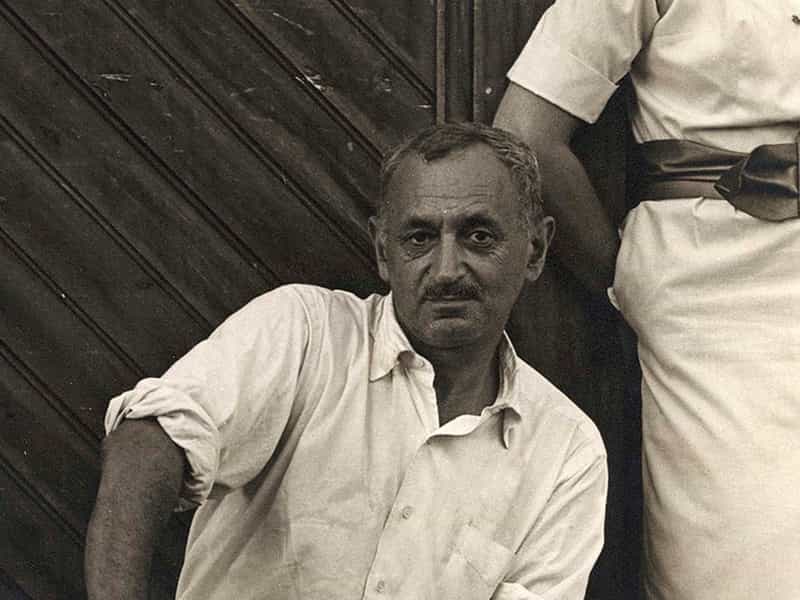Maurice Grosman
Maurice Grosman (1900-1976) always knew that he was an artist. At the age of 12 Grosman and his friends rented a studio, which the teen kept a secret from them for over a year. At the age of 17 he enrolled in the Fine Arts Academy of Dresden, and was quickly noticed. When a German patron granted him money for a trip to Berlin for his studies, Grosman, in his own gregarious fashion, spent the funds on a going away party, and then gave the remaining sum to friends that seemed more deserving. In Berlin, Grosman studied under Oskar Kokoschka, but primarily met the woman he was to marry, Tatyana Auguschewitsch. The young Grosmans found Berlin unwelcoming, as in 1931 the city was no place for bohemian and Jewish artists. Moving to Paris in 1931, Maurice immersed himself in his work and a new circle of friends that included, Chaim Soutine, Jacques Lipchitz, and Ossip Zadkine. With Lipchitz’s advice that Grosman moved away from the semi-cubist work, the popular style of the moment, and began to study the work in the Musée du Louvre. In 1937 Grosman exhibited in the Salon des Indépendents and at the Exposition International of 1937, as well as other various galleries.
Forced to flee, the Grosmans joined the list of refugees and emigrated in 1942 just two days before the Nazis occupied the city. Surrounded by friends from Paris the couple settled on Eighth Street. Grosman was included in a group show at the Niveau Gallery, and had solo shows at the gallery in 1947 and 1949. After the 1949 exhibit however, Maurice did not show again until 1962, with a solo show at Amel Gallery. Grosman moved between jobs, first becoming a framer, than a teacher, than a private art tutor, but none proved sufficient. In 1955, after a heart attack, the couple moved to their summer cottage permanently, and Mr. Grosman taught himself screenprinting. It was at this point that the Grosmans as publishers began, with reproductions that Maurice printed and Tatyana sold. They reproduced works by Picasso, Matisse, Chagall, Dufy, Gross, Tanayo, Kleinholz, and Grandma Moses. Friends Mary Callery, Jaques Lipchitz, Adja Yunkers and Max Weber allowed them to reproduce their original drawings.
Maurice slowly began to work again, and after he received a grant to create a work on a Jewish theme he started on one of the livres de luxe that ULAE is so famous for. Grosman took work from thirteen Yiddish poems and used them as raw material for the portfolio From Jewish Poems, 1959-65. During this time Grosman printing reproductions, and ULAE became the publisher of original lithographs and intaglio it is known as today. The couple worked together, but slowly Mr. Grosman stepped back and his Tatyana ran the company. In 1973 Grosman exhibited his neon and Plexiglas sculptures at the Hallmark Gallery. The drawings for Grosman’s neon and Plexiglas work were reproduced in Drawings I-X: For Neon and Plexiglas Construction, published by the Telamon Editions, an offset press started by the Grosmans for extra income. Shortly after his death, Tatyana Grosman was informed that Collaborations in Art, Science and Technology had awarded him a grant for his work with neon. In 1977, the Grey Gallery at New York University put up ten of his sculptures. Critic John Russell remarked, “somewhere in these stilled but never tentative statements a pure spirit enshrined.”
